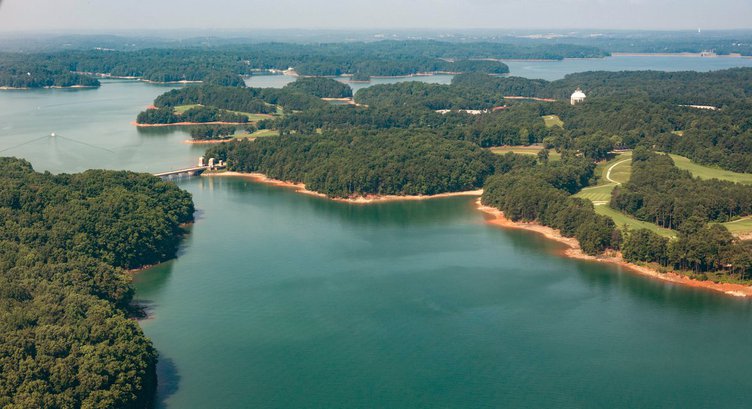General Water Safety Tips for Summer
Swimming-
Don’t Drink and Swim
Respect the water
Learn How to Swim
Never Swim Alone
Watch Your Children- Don’t Leave Them Alone or Without Adult Supervision
Don’t Overestimate Your Ability
Understand the dangers of Hypothermia- Average 54 Degrees River Water Temperature/77 Degrees Lake Water Temperature
Wear a Lifejacket If You Can’t Swim
Boating Safety-
Don’t Drink & Boat
Respect the Water
Take a Boating Safety Course
Follow the Rules of Road
Double Check Your Equipment
Have a Float Plan- Let People Know Where You Plan to Go
Watch out for the other guy
Be Situationally Aware of Your Surroundings
Check the Weather
According to the calendar, summer will not officially start until June 21 but, in reality, Memorial Day weekend has always marked the beginning of the season, and Lake Lanier’s Natural Resource Manager Nick Baggett estimates that “thousands and thousands” of people will visit the area parks, marinas, beaches and docks.
“It’s going to be good weather, it’s going to be dry weather, and it’s going to be extremely hot,” Baggett said. “People are attracted to water and we anticipate most of our parks will be filled to capacity.”
An average of 11.8 million people visit Lake Lanier each year, with the majority of those visitors arriving during “recreation season,” defined by the Army Corps of Engineers as between Memorial Day and Labor Day, and the influx of people increases the need for awareness and safety on the lake.
Although it varies from year to year, the most common accidents on Lake Lanier are drownings and boating collisions with an average of 8-12 deaths per year.
“When you come to Lake Lanier there are always different elements, different conditions,” Baggett said. “You have to be aware of your surroundings.”
In conjunction with their mission to promote public safety, on land and water, the Corps of Engineers holds a Lake Lanier Safety Task Force meeting involving the first responders and emergency services of all five counties (Hall, Dawson, Gwinnett, Lumpkin and Forsyth) that border Lake Lanier.
“We have this meeting before every major holiday weekend,” Baggett said. “It is very important to know what resources we have available and how best to manage them on the lake.”
Spreading those resources out over 38,000 acres of water, 10,000 private docks, 2 marinas and 692 miles of shoreline can be quite challenging, and Baggett talked extensively about the need for people visiting the lake to be aware of their surroundings and to have a basic understanding of water safety.
Along with knowing what is happening around them, Baggett quickly ticked off a list of basic water safety issues that he and Lake Lanier’s rangers encounter on a daily basis:
- Wear a life jacket
- Don’t drink and drive or drink and boat
- Make sure your equipment is operating properly before setting out on the lake
- Watch your children
- Never swim alone. Use a buddy system.
Due to the high levels of rain this year the lake is currently sitting at full summer pool of 1,071 feet and the water level itself poses a pair of problems not normally encountered during the typical summer outing – underwater debris and the threat of hypothermia.
“It’s odd to talk about hypothermia in the summer,” Baggett said. “Lake Lanier’s water temperature is right around 77 degrees and that makes it a real threat that people need to be aware of. As for debris, we haven’t had a lot of reports lately, but it is always something we caution people about.”
Alcohol plays a major role in accidents at the lake with it estimated that over 50 percent of drownings and boat collisions related to drinking. As a result, most of the parks on Lake Lanier are alcohol restricted and, of course, boating and drinking is illegal. Baggett strongly encouraged visitors to be knowledgeable about the rules before visiting the lake.
“Know before you go,” Baggett said. “We don’t like to make rules, but the rules we have in place are there for a reason and they have a need and a purpose. We do our best to serve the public both locally and nationally. Our rangers are out there to help people. If we can prevent one accident, one drowning, then we have done our job.”
For more information on the rules and a more complete listing of safety information visit https://www.sam.usace.army.mil/Missions/Civil-Works/Recreation/Lake-Sidney-Lanier/.

